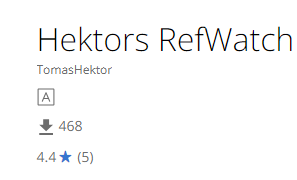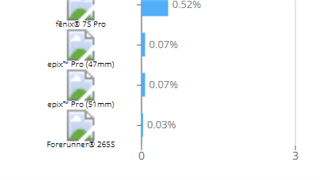I have an app where the total number of downloads is 468, see screenshots from apps.garmin.com below.
But if I look into the "per device statistics" and scroll down to the bottom, I see this:
If I assume that there is only one (1) FR265S device that has downloaded my app, and that is 0.03% of all downloads, this assumption would imply that 100% would correspond to ~3300 downloads. Somehow the numbers don't add up or am I interpreting the numbers wrong?
Is perhaps the number of downloads equal to the current number of installed instances? And the per device info is statistics of how many that has ever downloaded it and possibly deleted the app afterwards?



